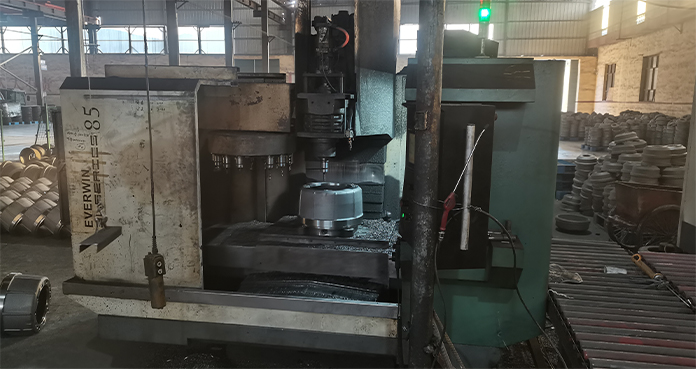Nov . 10, 2024 08:44 Back to list
Benefits of Using Aluminum Brake Drums for Enhanced Performance and Durability in Vehicles
The Role of Aluminum Brake Drums in Modern Automotive Engineering
The automotive industry has seen significant advancements over the years, particularly in materials engineering, where the choice of materials can enhance performance, safety, and efficiency. One of the pivotal components that have evolved in design and functionality is the brake system of vehicles, particularly brake drums. While traditional materials such as cast iron have long been the standard for brake drums, the introduction of aluminum brake drums has become a game-changer for automotive manufacturers and drivers alike.
Understanding Brake Drums
Brake drums are integral components of drum brake systems, which are designed to slow down or stop a vehicle by converting kinetic energy into thermal energy. When the brake pedal is pressed, brake shoes push against the internal surface of the drum, creating friction that slows the wheel's rotation. The material of the brake drum significantly influences the effectiveness, durability, and performance of the braking system.
Advantages of Aluminum Brake Drums
1. Weight Reduction One of the most notable advantages of aluminum brake drums is their lightweight nature. Aluminum is significantly lighter than cast iron, which can lead to weight reduction in vehicles. This reduction in weight contributes to improved fuel efficiency, better handling, and reduced wear on suspension components. In an era where manufacturers are constantly striving to enhance vehicle efficiency, aluminum brake drums present a compelling option.
2. Thermal Conductivity Aluminum has excellent thermal conductivity properties, allowing it to dissipate heat more effectively than cast iron. This quality is crucial in braking systems, as heat build-up can lead to brake fade, reducing effectiveness and safety. By utilizing aluminum, manufacturers can ensure that brake drums maintain performance over extended periods of heavy use, particularly in high-performance and heavy-duty vehicles.
3. Corrosion Resistance Corrosion is a common issue with metal components exposed to moisture and environmental factors. Aluminum, when treated or alloyed properly, offers superior resistance to corrosion compared to traditional cast iron. This characteristic lengthens the lifespan of brake drums, leading to lower maintenance costs and improved reliability over time.
4. Manufacturing Flexibility Aluminum can be easily formed and manipulated into complex shapes, allowing manufacturers to design brake drums that optimize both performance and aesthetics. This flexibility in design can lead to enhanced airflow around the brake components, further improving cooling and overall performance.
aluminum brake drums

Challenges and Considerations
Despite the numerous benefits of aluminum brake drums, there are challenges that automotive engineers must address. One significant concern is the material's susceptibility to fatigue under extreme conditions. Proper engineering and alloy selection are therefore essential to ensure durability and safety. Manufacturers must also consider the costs associated with producing aluminum components, as they can be higher than traditional materials.
Additionally, the market acceptance of aluminum brake drums is still evolving. While many high-performance and luxury vehicles have adopted aluminum components, traditional markets may be slower to transition, often due to established practices and consumer perceptions regarding the reliability of materials.
The Future of Aluminum Brake Drums
As automotive technology continues to advance, it is likely that the use of aluminum brake drums will become more prevalent. With the rise of electric and hybrid vehicles, the need for lightweight components that can manage heat effectively and enhance overall efficiency is paramount. The automotive industry is continuously exploring new alloys and manufacturing processes aimed at improving the performance and safety of aluminum brake drums.
Moreover, ongoing research into composites and advanced materials could lead to hybrid solutions that combine the best features of aluminum, offering even greater performance outcomes. The commitment to sustainability also encourages manufacturers to seek materials that reduce environmental impact while maintaining high standards of safety and performance.
Conclusion
Aluminum brake drums symbolize a significant step forward in automotive engineering, bringing together a blend of performance, lightweight design, and resistance to wear and corrosion. While challenges remain in terms of durability and market acceptance, the advantages offered by aluminum make it an appealing choice for the future of braking systems. As the industry evolves, the role of aluminum and innovative materials in creating safer, more efficient vehicles will undoubtedly expand, reshaping the landscape of automotive technology for years to come.
-
Iveco Brake Drum | Premium OE Quality for Daily & Eurocargo
NewsAug.22,2025
-
Your Brake Drum Man: Quality & Performance Parts
NewsAug.21,2025
-
Explore Japan: Ultimate Travel Guide & Authentic Experiences
NewsAug.19,2025
-
Your Brake Drum Man: Premium & Reliable Brake Drums for Sale
NewsAug.18,2025
-
ROR Web Development: Build Fast, Scalable, Secure Apps
NewsAug.17,2025
-
Scania Brake Drums: OEM Quality for Optimal Safety & Durability
NewsAug.16,2025
